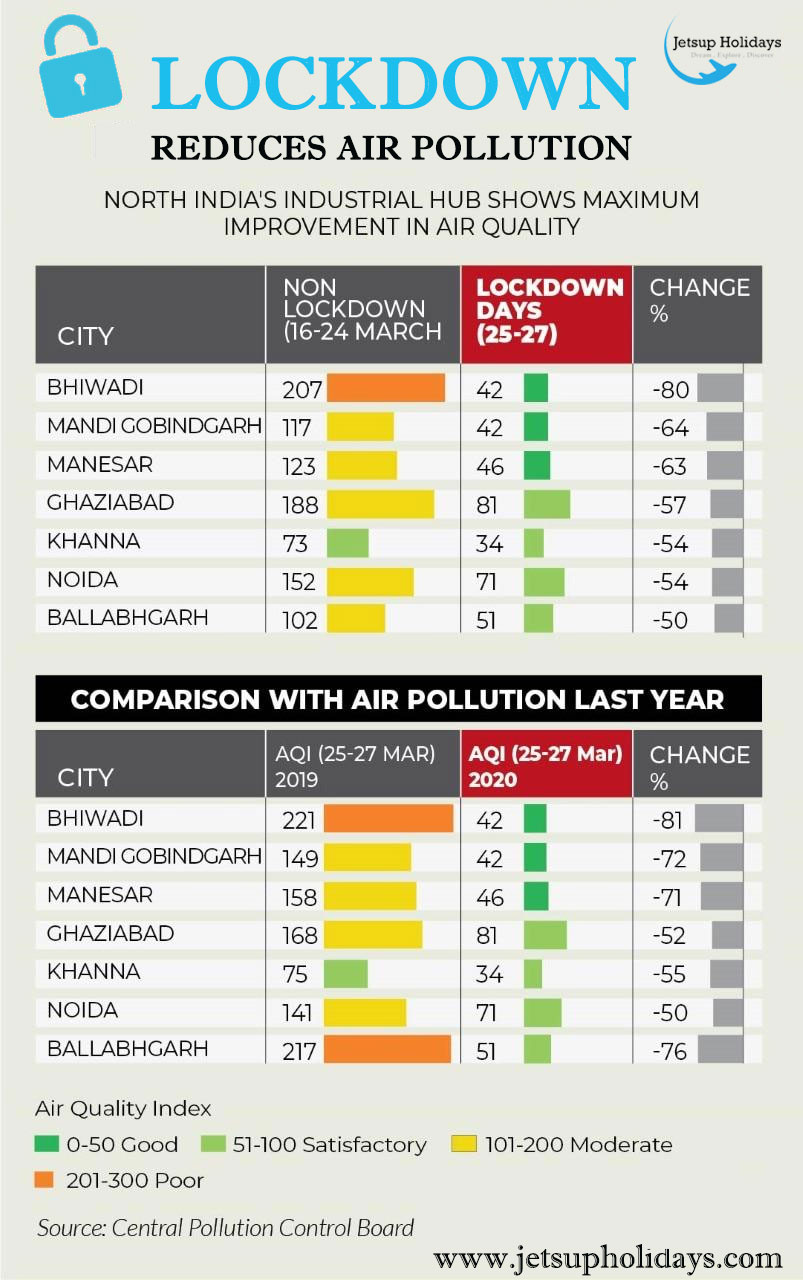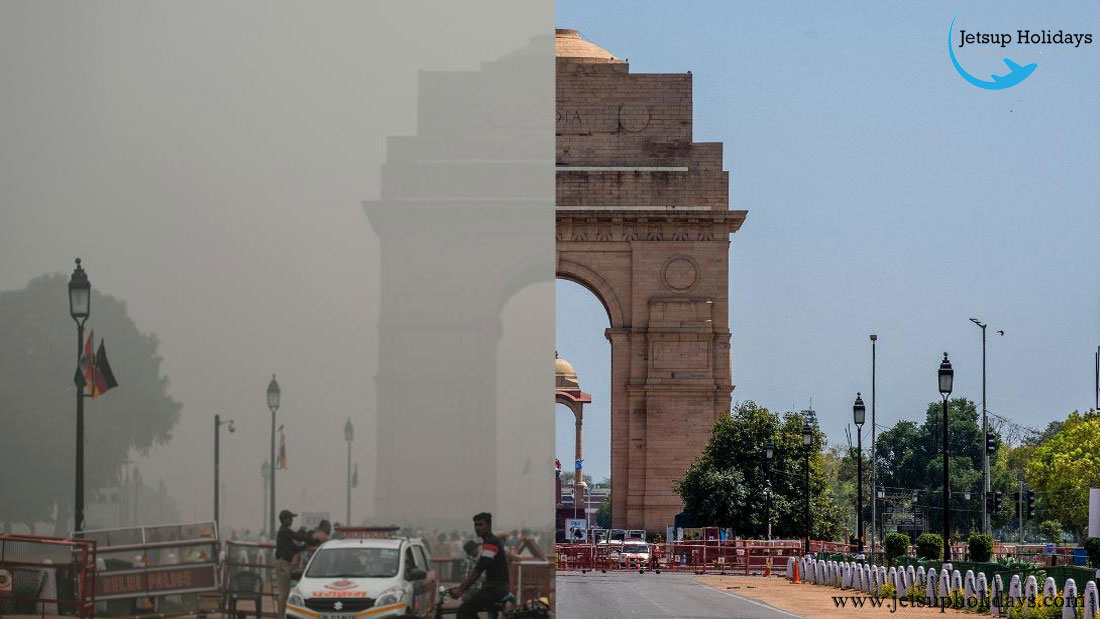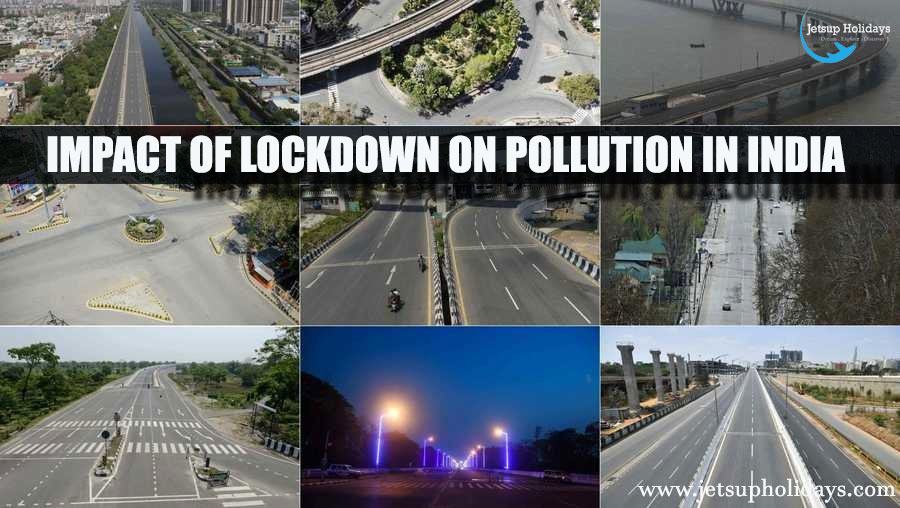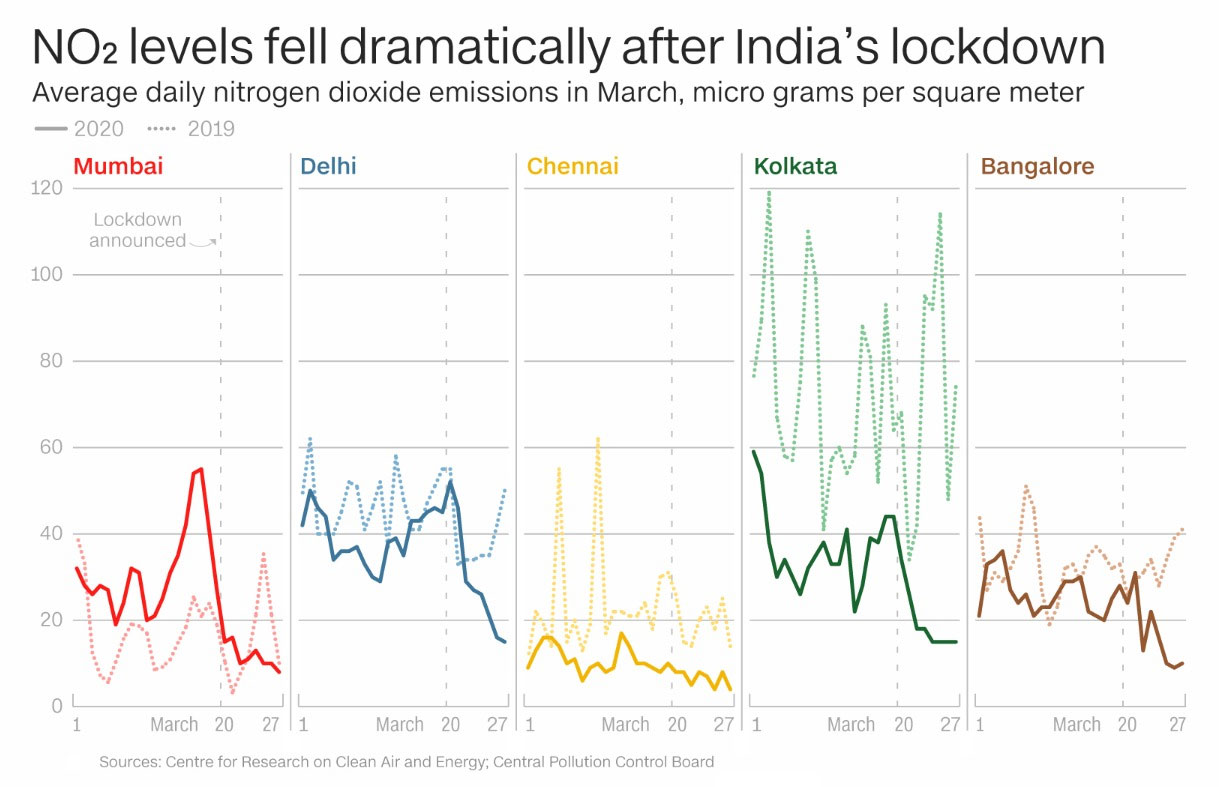India is currently under nationwide lockdown. Not only in India, but almost most of the countries in the world are stuck in the lockdown due to the pandemic- Coronavirus. A significant impact of nationwide lockdown has been observed on several issues from economy to social and business affairs to daily life. There are some major effects of lockdown on the environment due to life being paused. The purpose of imposing national lockdown was to prevent the imminent spread of the COVID-19 but holding 1.3 billion people in their home is not as easy as it appears. However, if we pay attention to the environmental consequences of lockdown, there are major outcomes apparently impacting the health of the climate and environment. Already, data shows that the metro cities are recording drastic fall of harmful microscopic particulate matter known as PM 2.5, and of Nitrogen Dioxide (NO2), which is emitted by vehicles and industrial plants. The immediate fall in pollutants and subsequent blue depicts a signal of dramatic shift for India’s climate and environment. The below picture signifies the current scenario.


In the national capital, as per government data from the CPCB (Central Pollution Control Board), a body of the environment ministry of India, was collated by the CREA (Centre for Research on Energy and Clean Air).
NO2 receives downfall from 52 pcm (per cubic meter) to 15 pcm at the same time a significant fall in these air pollutants in Mumbai, Bangalore, Chennai, and Kolkata. But if we segregate more deeply, we will find considerable points which shows how much lockdown has impacted the environment during this period.
Lowest Traffic Pollution


Prior to the national lockdown which began on March 25, previous shutdowns in India were also having an impact. During the first three weeks of March, a piece of information told by a scientist from the System of Air Quality and Weather Forecasting and Research (SAFAR) under the Ministry of Earth Sciences of India- the mean of NO2 levels declined by 40-50% in Ahmedabad, Pune and Mumbai as compared with the same period in 2018 and 2019. On March 22, also resulted in the lowest one-day traffic pollution level, an analysis given by CREA.
Pollution Protest
Air pollution is not only one of the major concerns in India but also in every country. However, a country with a rapidly growing economy having a population of 1.3 billion demands for an impactful initiative to curb down the pollution index. In the past few years, air pollution touches new records even forcing schools to close and flights to be diverted. Other cities in India also suffered such levels of pollution. But, in the period where all people in the country are following self-isolation and complete shutdown of all institutions and industries with some essential exceptions, the sky is looking even brighter and bluer than blue. Such side effects have given some ray of positivity for the future.
Waiting for a Cleaner Future


India has one of the highest numbers of respiratory diseases in the world and alongside highest number of tuberculosis cases in the world. Such widespread of Coronavirus can potentially damage the lungs and cause the increment in the risk associated with Coronavirus. But this global scenario has given a setback not only to this country but also to the entire world to divert big investment on public health & safety measures.
“The Coronavirus crisis also presents India with an opportunity to invest in a clean energy future”, said Dhiya from CREA.


